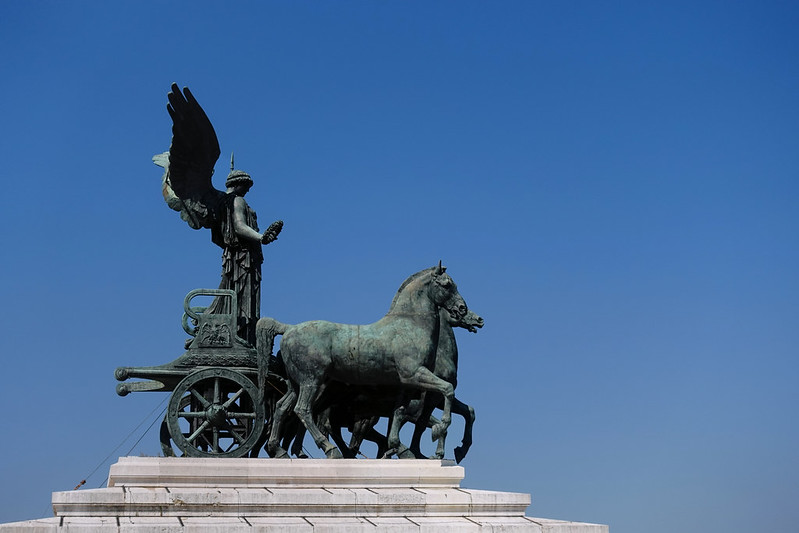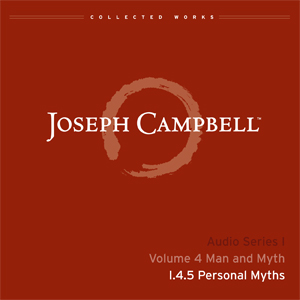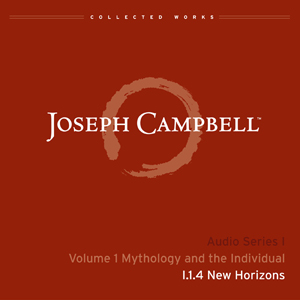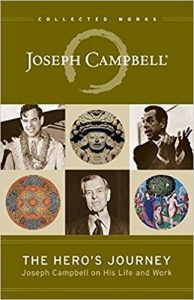The Chariot: A Vehicle for (and a Symbol of) the Mature and Integrated Psyche

Like all the tarot cards, the Chariot contains a complexity of sub-images and details. We can safely assume that each sub-image is not merely a random or decorative item and that there’s a purposeful and organic relationship between them all. We start, of course, with the main motif: a figure riding in a chariot. His countenance bears authority and clear intent. His gaze is firm. Clearly he is in control. But in control of what? In control of life, it seems.
More immediately, he’s in control of the two sphinxes that pull the chariot. On closer examination we realize the sphinxes have inverted black-and-white coloring. And each sphinx would go its own way if it weren’t for the governing will of the charioteer. He carries the wand of authority with such resolute intent that the chariot materializes as a virtual extension of himself as the charioteer. Yet it would seem from the card’s pictorial and structural elements that the charioteer does not bring forth his unquestioned authority out of himself alone. It seems that he has a mandate from the overarching Heavens, the realm of ultimate authority and command.
The picture suggests that the charioteer fulfills his mission by uniting the archetypal feminine and masculine (as contrapositions) within himself. The marriage of two contrary elements within the psyche is indicated by the chariot’s crest, which features the lingam and yoni.
Read more
A thorough study of the tarot requires us to hold a spherical and holographic consciousness, as well as a binary one. So when contemplating this card—beyond the charioteer being driven to merge the dualities within himself and balance the archetypal polarities (the yin and yang of the sphinxes) or the secondary antipodal notions of heaven and earth—there’s still myriad other intersecting influences within the psyche to harmonize, an extensive array of pluralisms, not only singular dualities.
Unfortunately, there just isn’t the space in this MythBlast to delve deeper into all the other diverse elements requiring integration, but in Letter VII of Meditations on the Tarot: A Journey into Christian Hermeticism, the anonymous author does hint at some of the more complex, contrary elements that are simultaneously at play.
The integrated man, master of himself, conqueror in all trials—who is he? It is he who holds in check the four temptations—i.e. the three temptations in the wilderness described in the Gospels as well as the temptation which synthesizes them: the temptation of pride, the center of the triangle of temptations—and who is, therefore, master of the four elements which compose the vehicle of his being: fire, air, water and earth. Master of the four elements – that is to say: creative being in clear, fluid and precise thought (creativity, clarity, fluidity and precision being the manifestations of the four elements in the domain of thought). It means to say, moreover, that he has a warm, large, tender and faithful heart (warmth, magnanimity, sensitivity and faithfulness being the manifestations of the four elements in the domain of feeling). There is, lastly, to add that he has ardor (‘man of desire’), fullness, flexibility and stability in his will (where the four elements manifest themselves as intensity, scope, adaptability and firmness). To summarize, one can say that a master of the four elements is a man of initiative, who is serene, mobile and firm. Here presents the four natural virtues of Catholic theology: prudence, strength, temperance and justice; or rather Plato’s four cardinal virtues: wisdom, courage, temperance and justice; or yet again the four qualities of Sankaracharya: viveka (discernment), vairagya (serenity), the ‘six jewels’ of just conduct, and the desire for deliverance. Whatever the formulation may be of the four virtues in question, it is always a matter of the four elements or projections of the sacred name יהוה—the Tetragrammaton—in human nature (p. 183).
The triumphant charioteer is victorious in bringing these many and variegated life modalities and principles into a coherent working relationship. The union, though, is not one where the contrary elements meld into one another blithely. The elements perpetually remain as a balance of otherwise converse intentions requiring constant vigilance, reanimation and restoration on a moment-to-moment basis. This harmonized symphony can only be acquired through the continuous renewal process occurring within the charioteer’s maturing psyche.
This process of ongoing equilibrium is required or else the charioteer and his chariot, and hence his life purpose, will be rudely torn apart. An example of a mythic character with an immature and unintegrated psyche is Phaeton, as shown by his handling of the sun chariot. Joseph Campbell references this myth in The Hero with a Thousand Faces:
The mystagogue is to entrust the symbols of office only to a son who has been effectually purged of all inappropriate infantile cathexes—for whom the just, impersonal exercise of the powers will not be rendered impossible by unconscious motives of self-aggrandizement, personal preference, or resentment. Ideally, the invested one has been divested of his mere humanity and is representative of an impersonal cosmic force. He is the twice-born: he has become himself the father. And he is competent consequently now to enact himself the role of the initiator, the guide, the sun door, through whom one may pass from infantile illusions of good and evil to an experience of the majesty of cosmic law, purged of hope and fear, and at peace in understanding the revelation of being (p. 115).
The charioteer in the tarot card, unlike Phaethon, masters the situation because he has mastered himself. This card is therefore both an archetypal representation of, and instruction for, our common shared project: healing the psyche by integrating its numerous and disparate parts. Without constant vigilance and self-discipline, the psyche is liable to lapse into discord with the consequent dispersion of its divergent energies.
In this card the charioteer is austere in his willful commitment to purpose. And so in our own lives, we, too, are to exert this same discipline and focus, but we must also temper this disposition through the practice of bestowing kindness and compassion to ourselves and others. These are the attributes that empower a supreme sovereign capacity as denoted by the star crown that the charioteer wears.
Finally, our anonymous author states, “For mastership is not the state of being moved, but rather that of being able to set in motion.” It’s only a mature and integrated psyche that can set the forces of life in motion, because it’s recognized itself as the vehicle (the Chariot) of the Divine.
 Kristina Dryža is recognized as one of the world’s top female futurists and is also an archetypal consultant and author. She has always been fascinated by patterns for feels we are patterned beings in a patterned universe. Her work focuses on archetypal and mythic patterns and the patterning of nature's rhythms and their influence on creativity, innovation and leadership. Find out more at her website or watch her TEDx talk on "Archetypes and Mythology. Why They Matter Even More So Today."
Kristina Dryža is recognized as one of the world’s top female futurists and is also an archetypal consultant and author. She has always been fascinated by patterns for feels we are patterned beings in a patterned universe. Her work focuses on archetypal and mythic patterns and the patterning of nature's rhythms and their influence on creativity, innovation and leadership. Find out more at her website or watch her TEDx talk on "Archetypes and Mythology. Why They Matter Even More So Today." Weekly Quote
Jung’s concept is that the aim of one’s life, psychologically speaking, should be not to suppress or repress, but to come to know one’s other side, and both to enjoy and to control the whole range of one’s capacities; i.e., in the full sense, to “know oneself.” And he terms that faculty of the psyche by which one is rendered capable of this work of gaining release from the claims of but one or the other of any pair-of-opposites, the Transcendent Function . . .
Featured Video
News & Updates
In this episode, Tyler Lapkin of the Joseph Campbell Foundation sits down with Cory Sandhagen. Cory is an American professional mixed martial artist. He currently competes in the Bantam weight division in the Ultimate Fighting Championship (UFC). With a background in psychology and a deep appreciation for the insights of visionaries like Carl Jung, Krishnamurti, and Joseph Campbell, Sandhagen has delved into the depths of the human psyche, exploring the transformative power of facing fears head-on.
Sandhagen’s path is a testament to the idea that true strength is not merely physical, but also mental and emotional. By venturing into the realm of the unknown, he embodies the hero’s journey, taking us on a captivating exploration of how confronting our fears can lead to profound self-discovery and empowerment.
Featured Work
Hero’s Journey, The (book)
Joseph Campbell, arguably the greatest mythologist of the twentieth century, was certainly one of our greatest storytellers. This masterfully crafted book interweaves conversations between Campbell and some of the people he inspired, including poet Robert Bly, anthropologist Angeles Arrien, filmmaker David Kennard, Doors drummer John Densmore, psychiatric pioneer Stanislov Grof, Nobel laureate Roger Guillemen, and others. Campbell reflects on subjects ranging from the origins and functions of myth, the role of the artist, and the need for ritual to the ordeals of love and romance. With poetry and humor, Campbell recounts his own quest and conveys the excitement of his lifelong exploration of our mythic traditions, what he called “the one great story of mankind.”
Subscribe to JCF’s email list to receive a weekly MythBlast newsletter along with occasional news and special offers from JCF.





